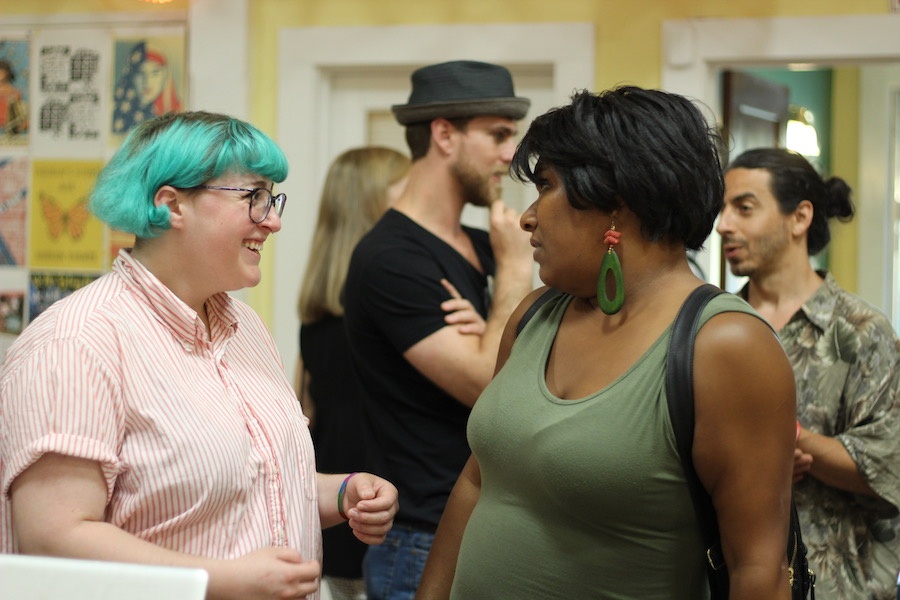
Economic Development | Hamden | Highwood | Kwadwo Adae | Public art | Arts & Culture | New Haven | Newhallville
 Lucian Addario, Jr. “If you really want to tap into the heart of the neighborhood, I believe their should be some men. Men and women work together to make America better.” Lucy Gellman Photos.
Lucian Addario, Jr. “If you really want to tap into the heart of the neighborhood, I believe their should be some men. Men and women work together to make America better.” Lucy Gellman Photos.
City Pointer Lucian Addario has one concern with Kwadwo Adae’s Women’s Empowerment Mural—there aren’t any men on it. And without men, Adae may be painting right over Newhallville’s history.
Addario grew up in Newhallville in the 1950s, when “the neighborhood was one big family” and the area was more racially integrated than it is today. Adae is a New Haven muralist and art teacher, finalizing designs for a 106-foot wall mural on the New Haven-Hamden border. Wednesday evening, their visions for public art clashed at the Whitneyville Cultural Commons, where Adae held the last of three public meetings on the mural’s progress and design.
Adae presented plans for the mural in public meetings at Lincoln Bassett School and the Newhallville Community Management Team earlier this month, and in a small convening at the mural site in March. Planned for a section of the Farmington Canal Trail on the New Haven-Hamden border, the mural will feature a central wall with eight multinational torch-bearing women and one girl, and an additional wall with a transgender woman, Black female doctor in a lab coat, and Newhallville matriarch Florence “Flo” Caldwell. A third wall will feature a pregnant woman, a member of the Hamden community, and a figure Adae has not yet chosen. Priming and painting are slated to begin in the coming weeks.
The subjects are all women, Adae said, because of the sexism and misogyny he’s observed toward the women around him—particularly women of color in his life—and the obstacles they’ve brought to his attention.
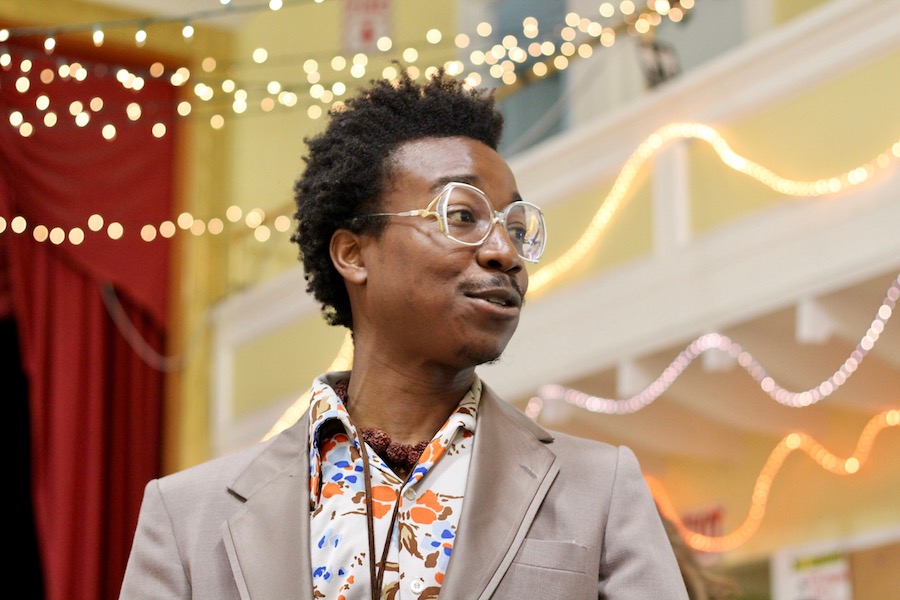 Kwadwo Adae: “We need to have people who are not women fighting for women. We need to have people who are not black fighting for people who are black. We need to have people who are not LGBT fighting for people who are LGBT. So I’m hoping I can lead by example.”
Kwadwo Adae: “We need to have people who are not women fighting for women. We need to have people who are not black fighting for people who are black. We need to have people who are not LGBT fighting for people who are LGBT. So I’m hoping I can lead by example.”
“We need to have people who are not women fighting for women,” he said to close to 60 who came out for the event. “We need to have people who are not black fighting for people who are black. We need to have people who are not LGBT fighting for people who are LGBT. So I’m hoping I can lead by example.”
He added that a recent $5,000 grant from REI has gotten the project “close to $40,000,” meaning that it has sufficient finances to begin in the next two weeks. Once he primes the wall and traces the outline of the mural, he will be inviting the community to join in, possibly instituting a “paint by numbers” technique to involve the neighborhood’s non-artists and youngest members. A Kickstarter campaign for the project remains open; to read more about overall sources of funding, click here.
But Addario hadn’t heard about the project until he read a piece in the New Haven Register describing plans to paint a total of 15 women at 400 Goodrich St.—an address that stood out to him as significant, because his uncles built a business there over 60 years ago.
For Addario, the case for representing them in the mural begins in the mid-1950s, as his uncles Ermino or “Ernie,” Frank, and Sam Addario finalized a mortgage on a property listed at 400 Goodrich St. and 55 Daisy St. In what began as an auto repair shop on the New Haven-Hamden border, the three built Globe Metal Finishing Corp., a finishing and plating facility that exported its products across the region. His father, Lucian Sr., set up a dry cleaning business right across the street, in a section of Hamden then referred to as Highwood.
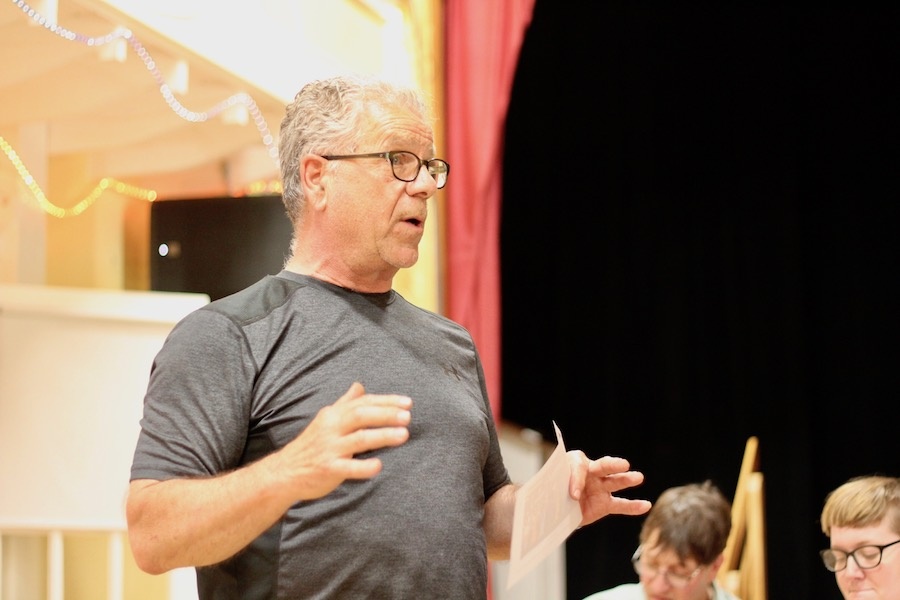 “I think there’s part of a disservice to the men who fought in the war, and some of the most significant Black women I knew growing up with them,” Addario said at the meeting, the first hand up during a 10-minute Q&A. “Ella Scantlebury is one.”
“I think there’s part of a disservice to the men who fought in the war, and some of the most significant Black women I knew growing up with them,” Addario said at the meeting, the first hand up during a 10-minute Q&A. “Ella Scantlebury is one.”
The businesses both thrived, keeping the family afloat as operations slowly began to decline at the nearby Winchester Repeating Arms Company in the 1960s and 1970s. Growing up on St. Mary’s Street, Addario said he experienced a buzzing neighborhood, where close-knit families looked out for each other, and mothers and grandmothers parented kids collectively from their front stoops and kitchen windows.
“We grew up as an integrated community,” he recalled after the meeting. “All the men did what they could for the country, and then after the war [WWII] they were entrepreneurs. Highwood would not be Highwood, and New Haven would not be New Haven, if not for the men and women who came through the Great Depression and the war.”
“It was amazing the amount of love in that neighborhood,” he added. “It was like one big family. If you really want to tap into the heart of the neighborhood, I believe their should be some men. Men and women work together to make America better.”
As designs for the mural stand, Addario said he’s worried that Adae is missing—or literally painting over—that history. In the 1990s, his uncles sold the building to Metropolitan Metal Finishing Corp., which shuttered operations in 1996. In 1997, representatives from the Environmental Protection Agency (EPA) removed 169 drums and 49 boxes of hazardous waste, according to documentation from Connecticut’s Department of Energy and Environmental Protection (DEEP). Then the building then fell into disrepair, as taxes that Metropolitan Metal owed both New Haven and Hamden grew to over $255,000.
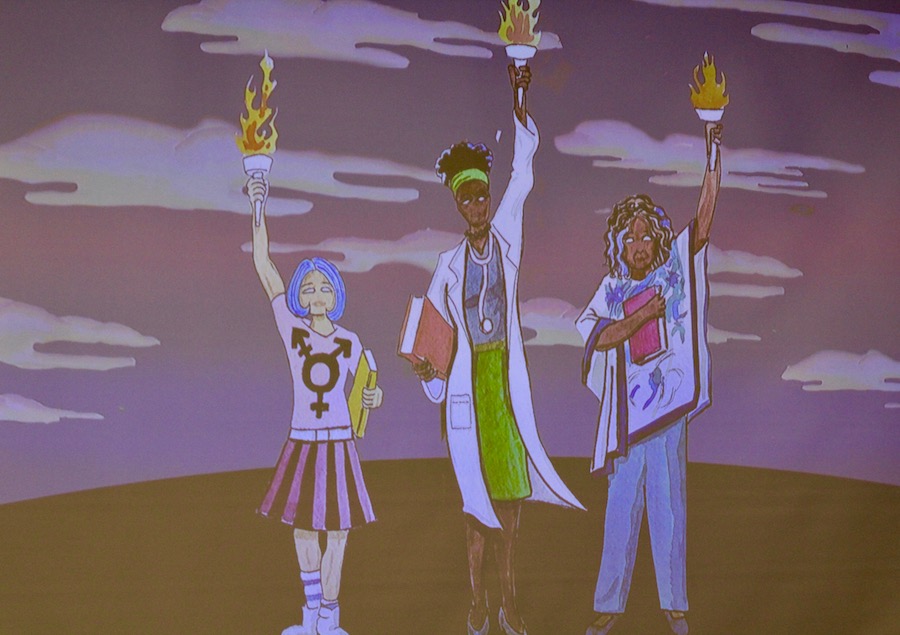 A design for three additional women was unveiled Wednesday night.
A design for three additional women was unveiled Wednesday night.
In 2012, The City of Hamden sold the building’s tax lien to the Hamden Development Corp. (HEDC), to which the City of New Haven also sold its 55 Daisy St. section of the property. That same year, the building received massive environmental remediation for cyanide, chromium, PCB, arsenic, lead, and mercury. It is now owned by Brak and Bunardy Poitier of Tri-Con Construction LLC, who are not charging Adae to use the wall.
For Addario, the minute details of the building’s history don’t matter. The memory of his uncles, and the male entrepreneurs that followed in their footsteps, does. Now a resident of City Point, he said he rides his bike on the Farmington Canal Trail three or four times a week.
“I think there’s part of a disservice to the men who fought in the war, and some of the most significant Black women I knew growing up with them,” Addario said at the meeting, the first hand up during a 10-minute Q&A. “Ella Scantlebury is one.”
“I think if you were to reorganize the program again, to represent and be inclusive … I think maybe you would find a place to use some men who were very significant in the movement for all of us,” he added. “I would say that we are all united. It’s not the women of the world, it’s not the men of the world. It’s that we are together. It’s a we unit. Those of us that know, it’s about us. The community as a whole. And not just about one single portion any longer.”
Adae listened intently, adding the occasional “mhhmm” and “mmm” as he locked eyes with Addario. A few attendees shook their heads at the suggestion; most just watched the two.
 Adae's assistant, Toni Giammona, with Ward 19 Alder Kim Edwards. Hamdenite Adam Christoferson and New Havener Patrick Escandon are pictured in the background.
Adae's assistant, Toni Giammona, with Ward 19 Alder Kim Edwards. Hamdenite Adam Christoferson and New Havener Patrick Escandon are pictured in the background.
“As someone who is creating art for the public, I know that it is impossible for me to create something that everybody is going to be okay with,” Adae said, thanking Addario for his concerns. “There’s going to be people that aren’t pleased with what I do. There’s going to be people that think it should be done X way, Y way, Z way. With every project that I’ve ever done and every project that I will do, that will be the case.”
“But it’s important for me to know how you feel,” he added. “I like to ride the trails too, and there are so many walls. There are so many more walls, where we can say so many more things. This is not our last chance to create art on the trail.”
Other attendees did not share the same concern. On the left side of the room, Westvillian and singer Thabisa offered to hold a benefit concert to support the mural, and bring community members together to paint. Newhallville Alder Kim Edwards called it “something we need more of,” noting that “if it beautifies our communities, it beautifies our hearts.”
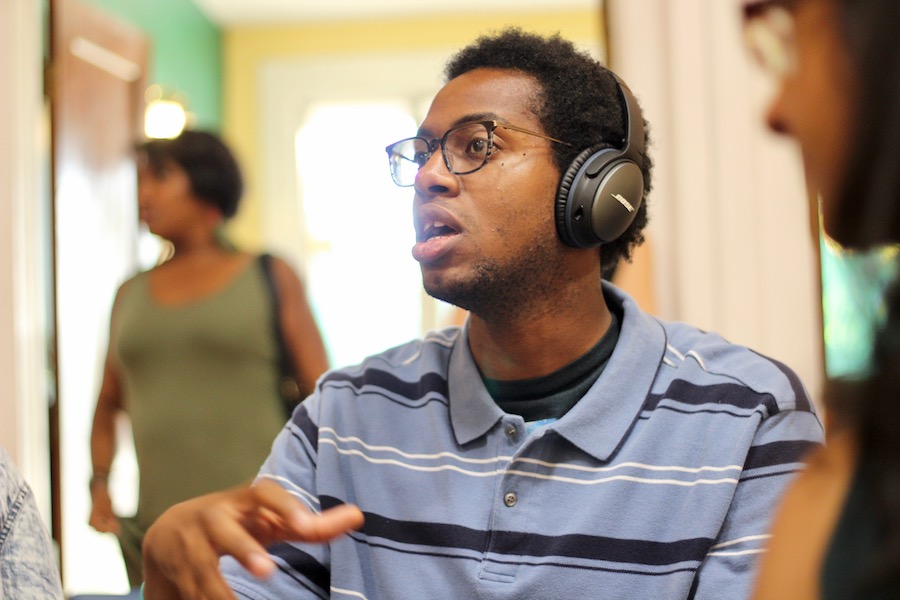 Justin Farmer:
Justin Farmer:
Hamden City Council member Justin Farmer, who grew up on the "Hamden part of Newhallville," said he sees the mural as a powerful tribute to strong women building community both locally and globally. He added that for him, it will double as a way to remember 18-year-old Lee'Andre Cousins-Benton, who was shot and killed just six days before his 19th birthday last November.
“I think the most important thing that you’re doing, and something that I’ve wanted to see, is have the community come together,” he said from the back of the room. “Oftentimes when we talk about urban spaces, we talk about safety. We talk about what that safety looks like. And having people come together and build community is what defines that for me. It’s very special to me … very special to see justice preserved and put back together.”
“I’m of a different generation,” he added of Addario’s concern. “Intersectionality doesn’t mean everyone has to be present to be represented.”
This article is part of an ongoing series on public art in the Greater New Haven area. For our previous coverage of Kwadwo Adae's Women's Empowerment Mural Project, click here and here. For more articles on public art, search for the 'public art' tag on the homepage.

